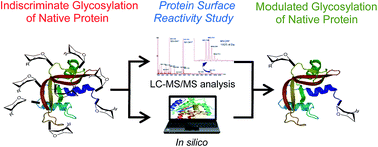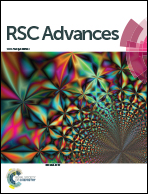Chemoenzymatic synthesis of neoglycoproteins driven by the assessment of protein surface reactivity†
Abstract
In this paper a series of 2-iminomethoxyethyl mannose-based mono- and disaccharides have been synthesized by a chemoenzymatic approach and used in coupling reactions with ε-amino groups of lysine residues in a model protein (ribonuclease A, RNase A) to give semisynthetic neoglycoconjugates. In order to study the influence of structure of the glycans on the conjugation outcomes, an accurate characterization of the prepared neoglycoproteins was performed by a combination of ESI-MS and LC-MS analytical methods. The analyses of the chymotryptic digests of the all neoglycoconjugates revealed six Lys-glycosylation sites with a the following order of lysine reactivity: Lys 1 ≫ Lys 91 ≅ Lys 31 > Lys 61 ≅ Lys 66. A computational analysis of the reactivity of each lysine residue has been also carried out considering several parameters (amino acids surface exposure and pKa, protein flexibility). The in silico evaluation seems to confirm the order in lysine reactivity resulting from proteomic analysis.


 Please wait while we load your content...
Please wait while we load your content...